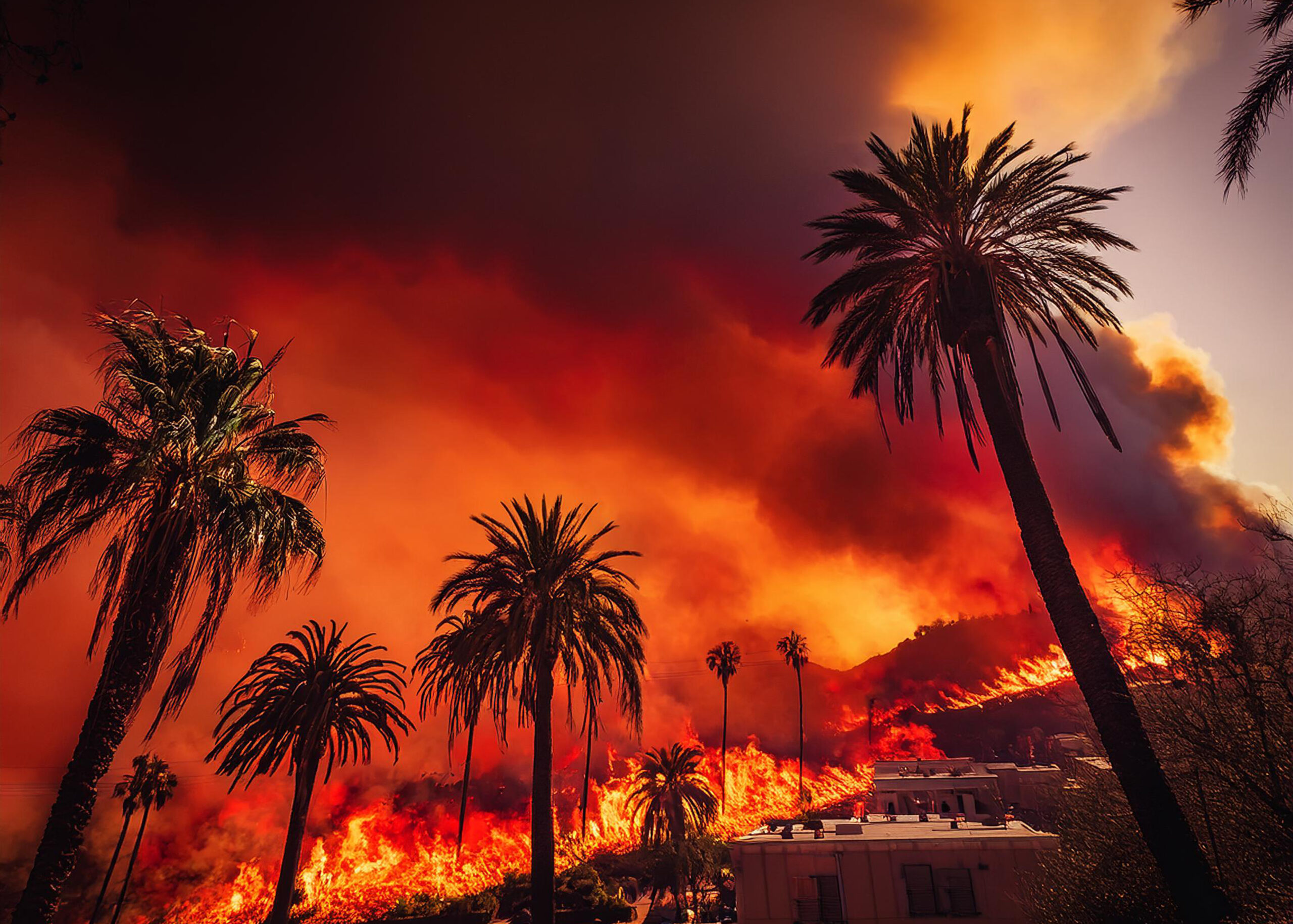Wildfires are a stark reminder of nature’s immense power and the impact of human activity on our environment. The Palisades Fires, a series of devastating wildfires that have occurred in the Palisades region of California, have left lasting effects on the environment, communities, and local economies. These fires, fueled by dry conditions, high winds, and increasingly volatile weather patterns, highlight the pressing need for sustainable practices, improved fire prevention, and comprehensive recovery efforts.
This article explores the effects of the Palisades Fires, examining the environmental, social, and economic consequences while emphasizing the importance of mitigation and resilience.
Environmental Impacts
1. Destruction of Natural Habitats
One of the most immediate and visible effects of the Palisades Fires is the destruction of local ecosystems. The fires have scorched thousands of acres of land, decimating forests, grasslands, and wildlife habitats. Native species, from birds to mammals to insects, face displacement or death as their homes and food sources are destroyed.
The loss of vegetation also creates a ripple effect, destabilizing soil and increasing the likelihood of erosion. Without plant roots to hold the soil in place, the area becomes prone to landslides, particularly during subsequent rainy seasons.
2. Air Quality Deterioration
The Palisades Fires released massive amounts of smoke and particulate matter into the atmosphere, severely affecting air quality. These pollutants can travel far beyond the immediate vicinity of the fire, impacting neighboring communities and even distant cities. Residents in affected areas often experience respiratory problems, eye irritation, and other health issues due to prolonged exposure to poor air quality.
3. Carbon Emissions and Climate Change
Wildfires are a significant contributor to greenhouse gas emissions. The Palisades Fires released tons of carbon dioxide, methane, and other gases into the atmosphere, exacerbating climate change. This creates a vicious cycle, as climate change increases the likelihood of future wildfires through higher temperatures and prolonged droughts.
Social Impacts
1. Evacuations and Displacement
During the Palisades Fires, thousands of residents were forced to evacuate their homes. Evacuations are often chaotic and emotionally taxing, leaving families uncertain about the safety of their homes and belongings. For some, the fires resulted in permanent displacement as their homes were destroyed or deemed uninhabitable.
The loss of personal possessions, sentimental items, and a sense of normalcy takes a heavy psychological toll on those affected. Mental health issues such as anxiety, depression, and post-traumatic stress disorder (PTSD) are common among wildfire survivors.
2. Health Concerns
In addition to respiratory issues caused by poor air quality, the fires posed other health risks. Exposure to ash, soot, and toxic chemicals released during the fires can lead to long-term health complications. Vulnerable populations, including children, the elderly, and those with preexisting conditions, are particularly at risk.
3. Community Strain
Wildfires disrupt the fabric of communities, straining relationships and resources. Public services, such as emergency response teams and healthcare facilities, are often overwhelmed during and after a fire. Additionally, the stress of rebuilding and recovering can lead to tensions within communities, particularly when resources are scarce or unevenly distributed.
Economic Impacts
1. Property Damage
The Palisades Fires caused significant property damage, destroying homes, businesses, and infrastructure. For many homeowners, insurance may not fully cover the costs of rebuilding, leaving them financially vulnerable. Businesses in the area face disruptions in operations, loss of inventory, and a decline in customer base, further compounding economic challenges.
2. Cost of Firefighting and Recovery
The financial cost of combating the Palisades Fires was immense. Firefighting efforts require extensive resources, including personnel, equipment, and aircraft. These costs often strain local and state budgets, diverting funds from other essential services.
Recovery efforts, including debris removal, rebuilding infrastructure, and providing aid to affected residents, add to the financial burden. The long-term economic impact on the region can be felt for years as communities struggle to return to pre-fire conditions.
3. Tourism Decline
The Palisades region, known for its natural beauty and recreational opportunities, relies heavily on tourism. Wildfires significantly reduce the area’s appeal, as scenic landscapes are scarred, hiking trails are closed, and air quality remains poor. The loss of tourism revenue affects local businesses, from hotels and restaurants to outdoor adventure companies.
Long-Term Effects and Recovery
1. Environmental Recovery
The natural environment will eventually recover, but it is a slow process. Some plant species, such as chaparral, are adapted to fire and will regenerate over time. However, the recovery of animal populations and the reestablishment of complex ecosystems can take decades.
Efforts to aid recovery include reforestation projects, erosion control measures, and the removal of invasive species that may take advantage of the disrupted landscape. These initiatives require collaboration between government agencies, environmental organizations, and local communities.
2. Community Rebuilding
Rebuilding communities affected by the Palisades Fires involves more than just reconstructing homes and infrastructure. It requires addressing the emotional and psychological needs of residents, providing financial support, and ensuring that recovery efforts are equitable.
Local governments and nonprofits play a crucial role in providing resources such as temporary housing, counseling services, and financial assistance. Community resilience programs, which focus on preparing for future disasters, are also essential.
3. Economic Revitalization
Revitalizing the local economy after a wildfire is a complex challenge. Businesses need support to reopen and recover, while residents must be encouraged to return to the area. Investments in sustainable tourism, infrastructure improvements, and local entrepreneurship can help stimulate economic growth.
Prevention and Mitigation
The Palisades Fires underscore the importance of wildfire prevention and mitigation. Key strategies include:
- Improved Land Management: Regular clearing of dry vegetation and controlled burns can reduce the risk of large-scale fires.
- Community Education: Raising awareness about fire safety, evacuation plans, and emergency preparedness is crucial.
- Infrastructure Upgrades: Installing fire-resistant building materials and creating defensible spaces around homes can reduce fire damage.
- Policy Changes: Addressing climate change through policies that reduce greenhouse gas emissions is essential for mitigating the underlying causes of increasingly severe wildfires.
Conclusion
The Palisades Fires have left a profound impact on the environment, communities, and economy. While recovery will take time and resources, these fires also offer an opportunity to learn and adapt. By prioritizing prevention, investing in resilience, and fostering collaboration, we can reduce the impact of future wildfires and create a more sustainable future.
As the Palisades region works to rebuild, it serves as a powerful reminder of both the challenges and the resilience of those affected by wildfires. Together, we can honor their strength by committing to solutions that protect our communities and the environment for generations to come.

